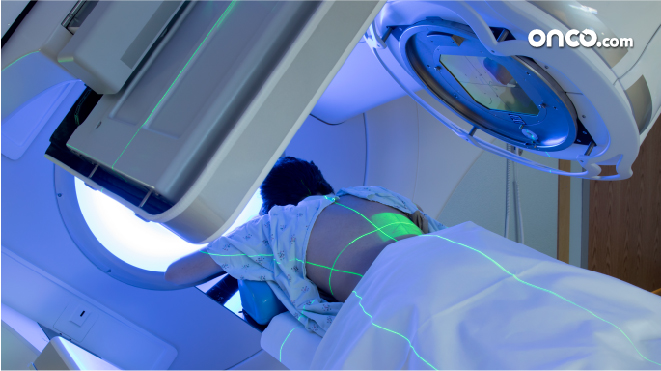Radiotherapy for bone cancer
Radiation therapy, also known as radiotherapy, employs high doses of X-rays to kill cancer cells or shrink tumors. Low doses of radiation are used in X-rays to capture images of teeth and broken bones and in the diagnosis of bone cancer


Radiotherapy kills cancer cells and slows its growth by damaging their DNA. This DNA kills cancers cells and expells them. It takes days or weeks of treatment before this DNA can cause cancer cells to die which continue to die after treatment ends.
Optimum uses of radiotherapy
- Before surgery, to try and shrink the tumor. It helps the surgeon remove the cancer completely. Consequently, limb-sparing surgery is possible instead of an amputation.
- During surgery, so it reaches the tumor straight without passing through the skin and other adjacent tissue.
- After surgery, in order to reduce the risk of recurrent cancer. If surgery does not remove the tumor completely, radiotherapy helps to shrink it.
Kinds if radiotherapy
1. Intensity modulated Radiation therapy (IMRT)
IMRT is a sunset of external beam radiotherapy (EBRT). It uses sophisticated inverse computer programs in order to calculate varying doses of radiations that need to strike directly at the tumor from different angles. This allows safe administering of high doses increasing the chance for cure.
2. Proton therapy
This delivers less exposure to organs near the tumor. Proton treatment is popular for children for the same reason and is less riskier to robust and growing tissues.
3. Stereotactic radiosurgery
This is a sophisticated technique that involves highly specialized methods. It delivers very high doses of radiation directly to the tumors minimizing effects on surrounding tissues and consequently minimizing side effects. Usually performed in regions near the spine and the brain.
4. Brachytherapy
It is a form of internal radiation that delivers directly to the tumor itself. A common type is intraoperative radiotherapy in which a large single dose of radiation aims at the tumor during the surgery directly. Other types involve temporary or permanent radioactive seeds treating the insides of tumors.
Extracorporeal radiation is a part of limb-salvage surgery which involves dislodging the bone with the cancer. It also treats it with radiation and relodging it. subsequently, healing wound problems, loss of joint movement, change in limb length and fractures are potential side-effects.
Support for patients
Patients need to be educated and enough information and reassurance need to be given to prepare them before surgery. Parent-child communication needs support from health professionals and RT nurses. Communication between parent and child is associated with emotional health when a parent has cancer or vice-versa.
